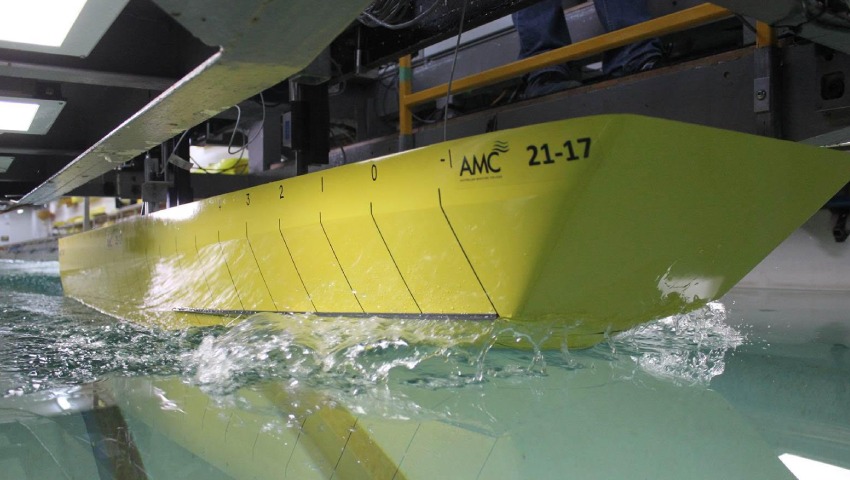The company’s landing craft, proposed for selection under LAND 8710, has undergone tank testing at the Australian Maritime College.
Serco Australia has completed a round of tank testing for its provisional landing craft design, which the firm has offered to the Commonwealth government as part of the LAND 8710 Phase 1 Capability Element 1 (CE1) — aimed at developing independent landing craft to replace the Army’s current Landing Craft Mechanised (LCM-8) vessels.
The tank testing, which was conducted at the Australian Maritime College (AMC) in Launceston, involved the construction of a 1/16th scale model of Serco’s design, dubbed ‘Oboe 1’ in recognition the Australian Army’s amphibious operations during the Second World War.
Oboe 1, which draws on Serco’s experience supporting US Navy and Army projects, underwent a series of speed and performance trials.
The AMC will now compile data about how the vessel would operate under differing load conditions and how it would dynamically perform at sea at various speeds and sea-states.
Upon receipt of the results, Serco will then explore ways to further refine performance specifications in support of the ADF’s requirements.
Serco has delivered over a dozen large vessels for Navy under the Fleet Marine Services contract, and is expected to soon deliver Australia’s new Antarctic icebreaker, RSV Nuyina, as part of its 30-year partnership with the Australian Antarctic Division (AAD).
“Serco’s Australian industry team stand ready to deliver for the Commonwealth, bringing Australian industry skills and expertise to the forefront, and positioning Australia to drive forward in establishing a sustainable and vibrant shipbuilding industry,” the company said in a statement.
Serco is competing against shipbuilding giants Austal and Navantia Australia for LAND 8719 P1 CE1.
Defence is expected to release a request for tender (RFT) later this year.
LAND 8710 includes a second element, CE2 — which aims to develop a new amphibious vehicle (AV) to replace the Army’s Lighter, Amphibious Resupply, Cargo – 5 tonne vehicles (LARC-V).
Both the landing craft and the AV, which will be operated as two separate fleets, are expected to provide independent shore-to-shore, ship-to-shore, and over-the-shore capabilities to better manoeuvre and sustain the ADF in littoral and riverine environments.
The project, worth approximately $800 million, is expected to achieve initial operating capability by 2026.








